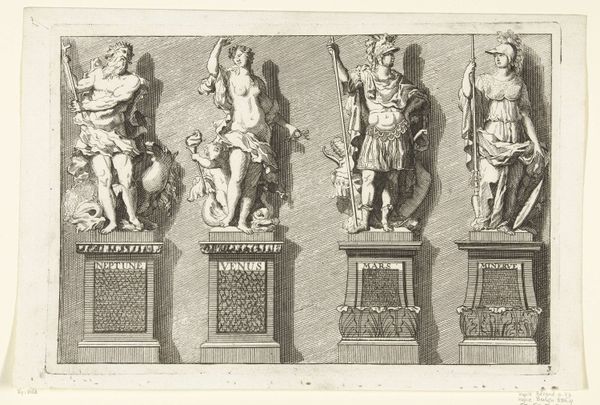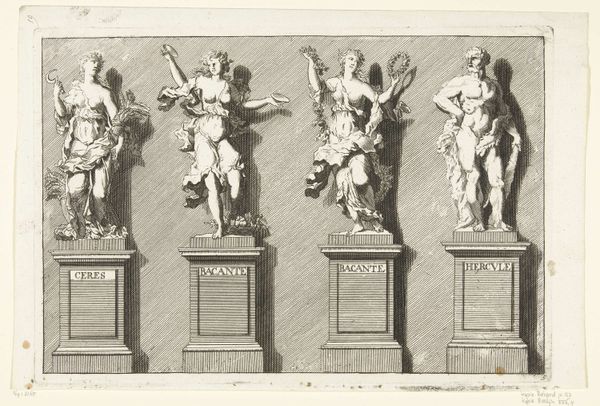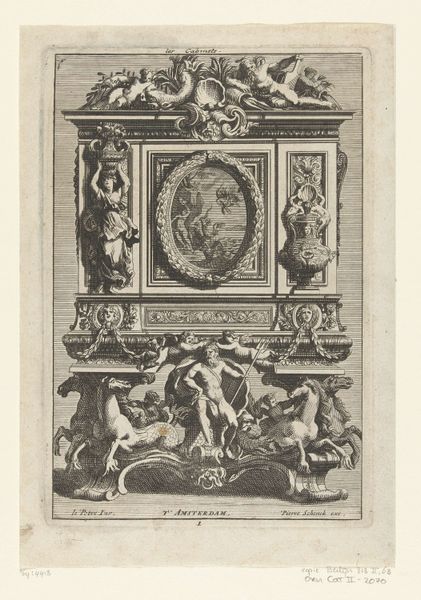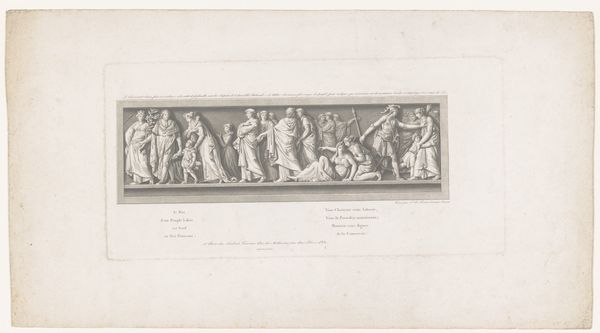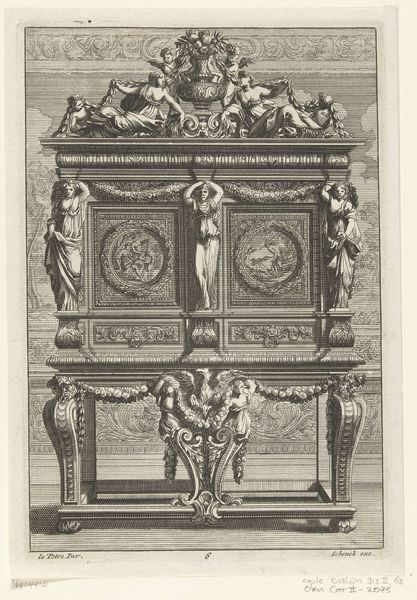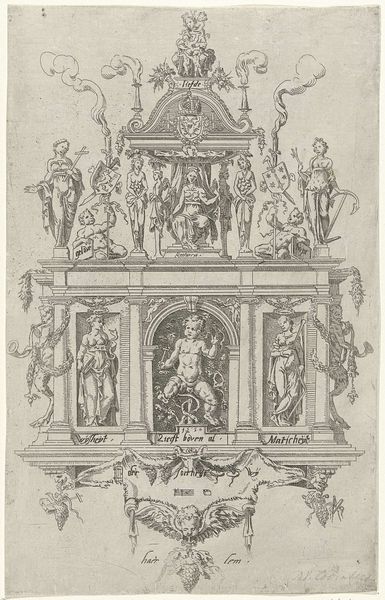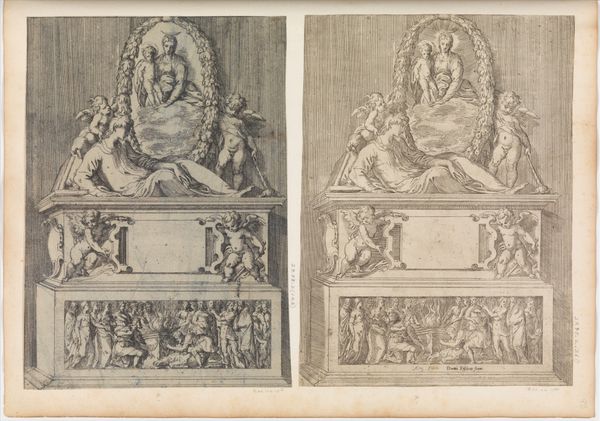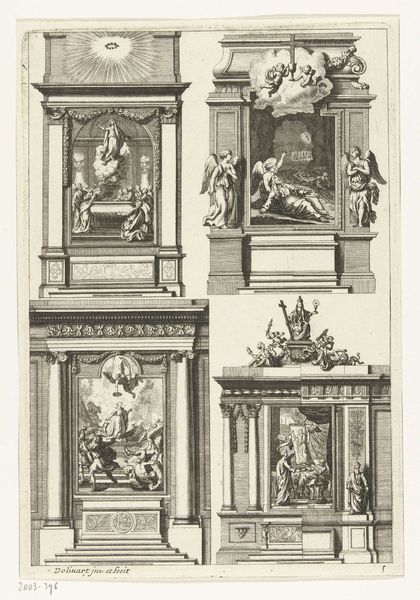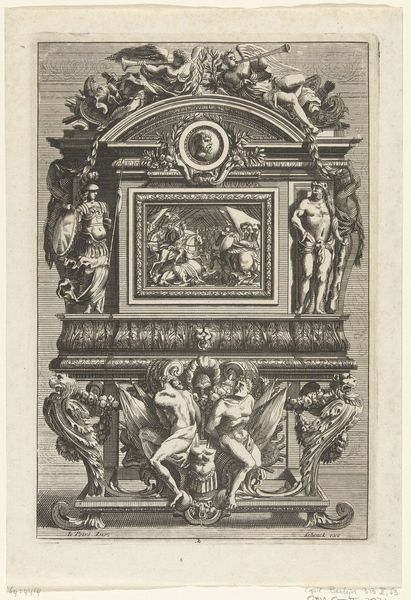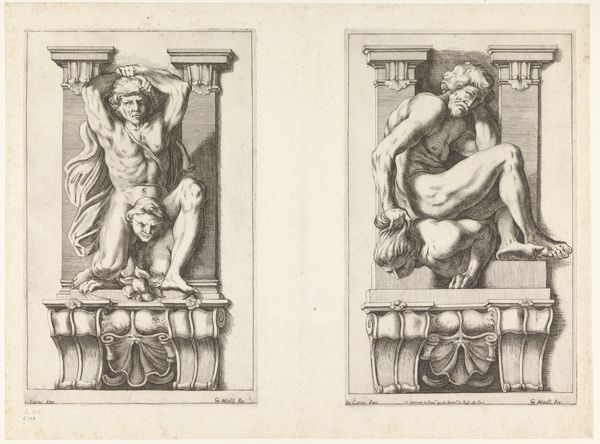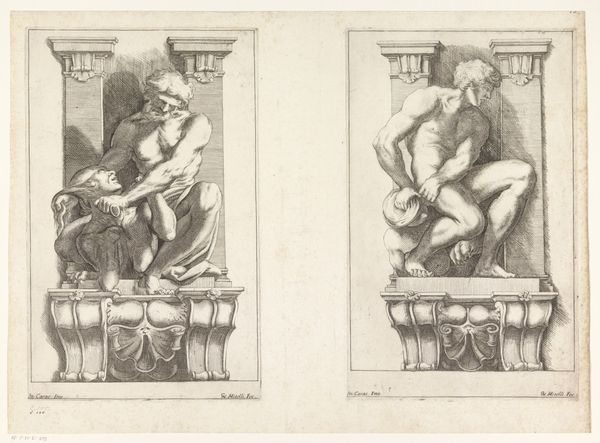
Dimensions: height 187 mm, width 273 mm
Copyright: Rijks Museum: Open Domain
Curator: Welcome to the Rijksmuseum. We’re standing before an engraving from before 1800, titled “Vier beelden op sokkels: Winter, Herfst, Zomer, Lente”—“Four Statues on Pedestals: Winter, Autumn, Summer, Spring” in English. It's attributed to an anonymous artist. Editor: My initial impression is one of cool, classical reserve. The figures are depicted in grayscale which immediately grants it a certain austere elegance. You get the feeling of monumental sculpture, captured in a very graphic, reproductive medium. Curator: Precisely. What’s fascinating is how it renders sculptural presence through printmaking. We have these allegorical figures – representations of the four seasons, each carefully posed upon a pedestal. Note the contrast between the stark, almost industrial quality of the pedestals, with their cartouches, versus the sinuous rendering of each figure, clearly inspired by antique models. How do you think the choice of engraving plays into its meaning? Editor: The engraving technique feels crucial. This artwork highlights the dissemination of classical ideals. This medium facilitated the reproduction and circulation of these classical forms on a mass scale, beyond elite circles and sculpture gardens. Curator: I concur. Let’s consider the symbolism, especially the attributes. Winter is cloaked, leaning on a staff, conveying hardship. Autumn holds a cup of wine, Bacchus-like, ripe with the season’s harvest. Summer and Spring display wreaths of flowers and vegetation, the cyclical renewal and fertility they bring. There's such rich iconography condensed here. Editor: And there's a decided cultural weight imbued through each character: winter with the burden of existence, versus the optimism of spring, each reflecting broader sentiments beyond seasonal changes, informing values across epochs. The artistic choice here serves to codify an ideal—beauty and the world as divinely mandated through aesthetic and iconographic harmony. Curator: It underscores a belief in order, tradition, and an adherence to classical standards in a way accessible via printed matter. This piece gives much to ponder, considering the intersection of artistic intent, the chosen material, and its subsequent impact on its intended audience. Editor: It’s incredible to think of the labour that went into making these figures, only to be transferred, reshaped through mechanical means; almost like a precursor to industrial repetition, and reproduction now available. Curator: Indeed, a potent reminder that artistic meaning is always entwined with the material conditions of its creation. Editor: Ultimately, a journey through iconography and process makes it rewarding for different tastes.
Comments
No comments
Be the first to comment and join the conversation on the ultimate creative platform.
